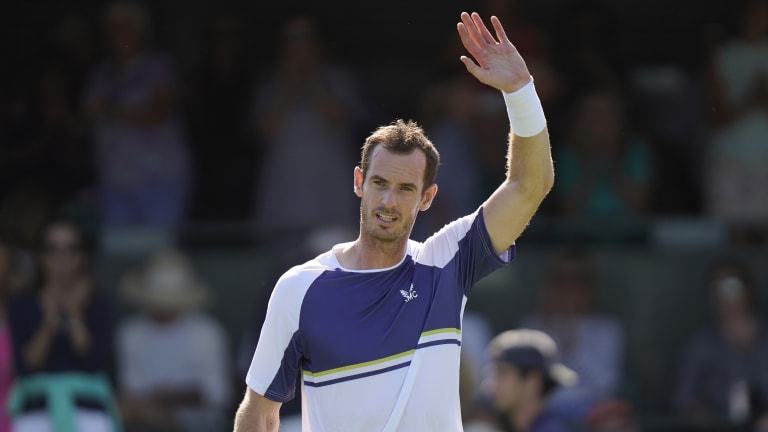Tennis.com Interview
Newport nourishes Andy Murray: the future Hall of Famer opens up about the late Maggie May—and Rusty's noisier namesake, Lleyton Hewitt
By Jul 15, 2022Tennis.com Interview
Jan-Lennard Struff sees Munich title defense bid as 'perfect opportunity' to turn 2025 around
By Apr 14, 2025Tennis.com Interview
Lorenzo Musetti manifested his 'special' week in Monte Carlo with first Masters 1000 final
By Apr 12, 2025Tennis.com Interview
No logic, just a feeling: Andrey Rublev "always knew" he wanted to work with Marat Safin
By Apr 07, 2025Tennis.com Interview
Brad Gilbert, Patrick McEnroe weigh in on U.S. men's tennis evolution
By Apr 05, 2025Tennis.com Interview
Patrick McEnroe decries Jannik Sinner suspension, tags Joao Fonseca as future star
By Apr 04, 2025Tennis.com Interview
On chicken farm, Danielle Collins embraces “crunchy granola lifestyle”
By Apr 03, 2025Tennis.com Interview
Feeling like a teenager, Alizé Cornet, 35, makes triumphant comeback from retirement
By Apr 02, 2025Tennis.com Interview
Danielle Collins launches iconic richsport merch collab
By Mar 07, 2025Tennis.com Interview
Zizou Bergs: From TikTok to Top 50 in Indian Wells?
By Mar 06, 2025Tennis.com Interview
Newport nourishes Andy Murray: the future Hall of Famer opens up about the late Maggie May—and Rusty's noisier namesake, Lleyton Hewitt
"It's just really weird when she's not in the house. It feels a lot quieter, even though she wasn't a dog that barked a lot," the former world No. 1 shares from the Infosys Hall of Fame Open.
Published Jul 15, 2022
Advertising
Advertising
Advertising

Murray is seeking his 47th career singles title this week.
© Copyright 2022 The Associated Press. All rights reserved